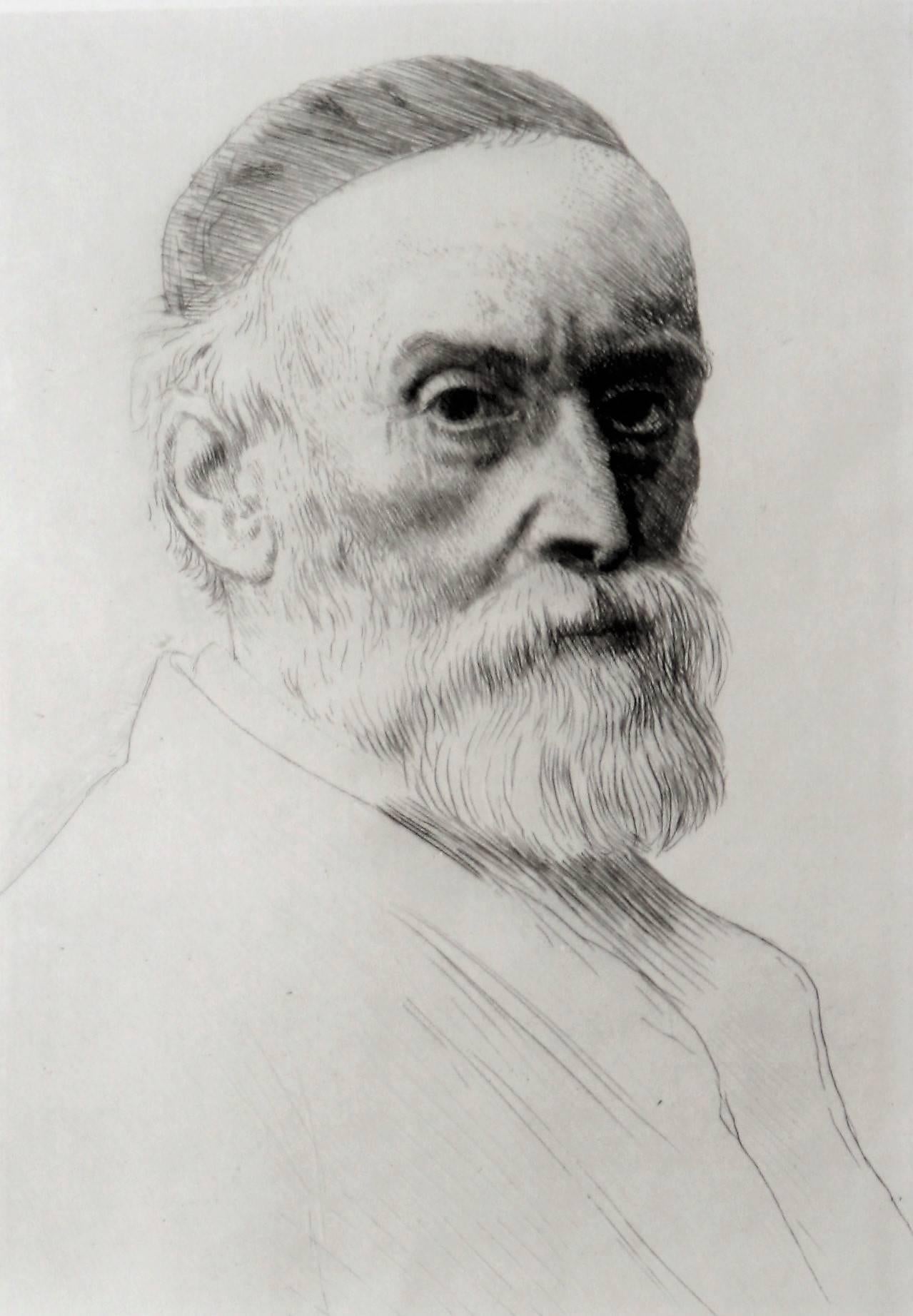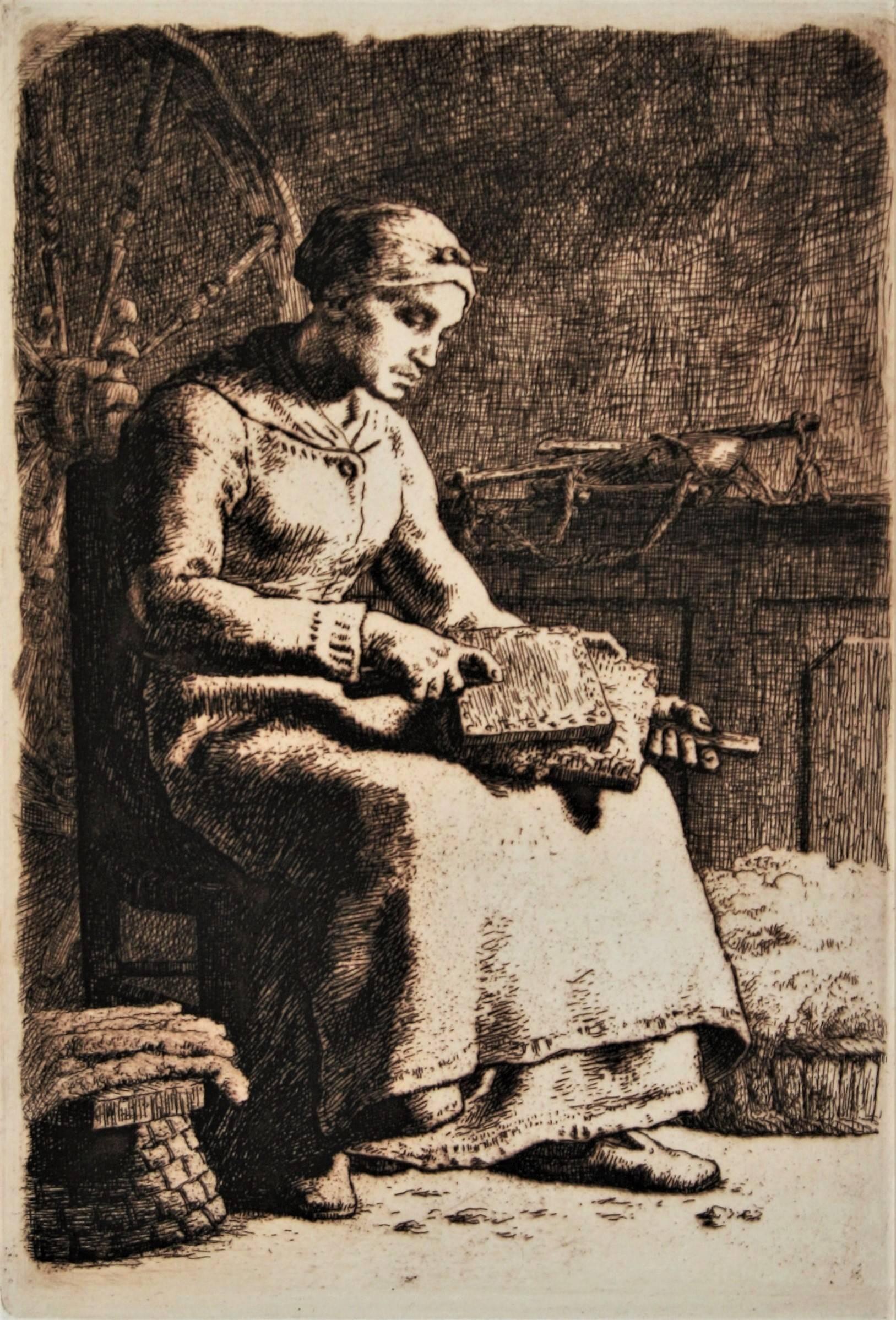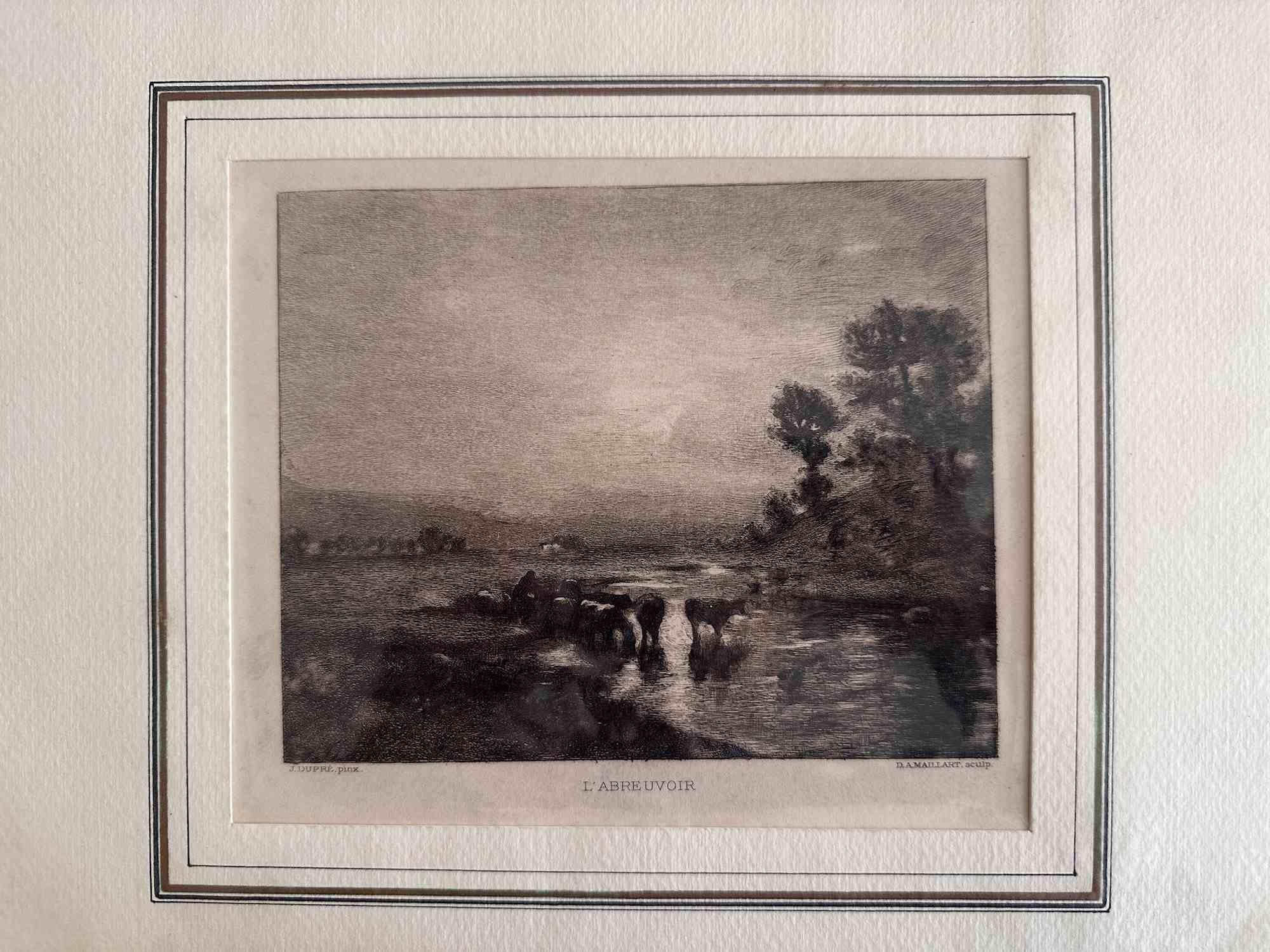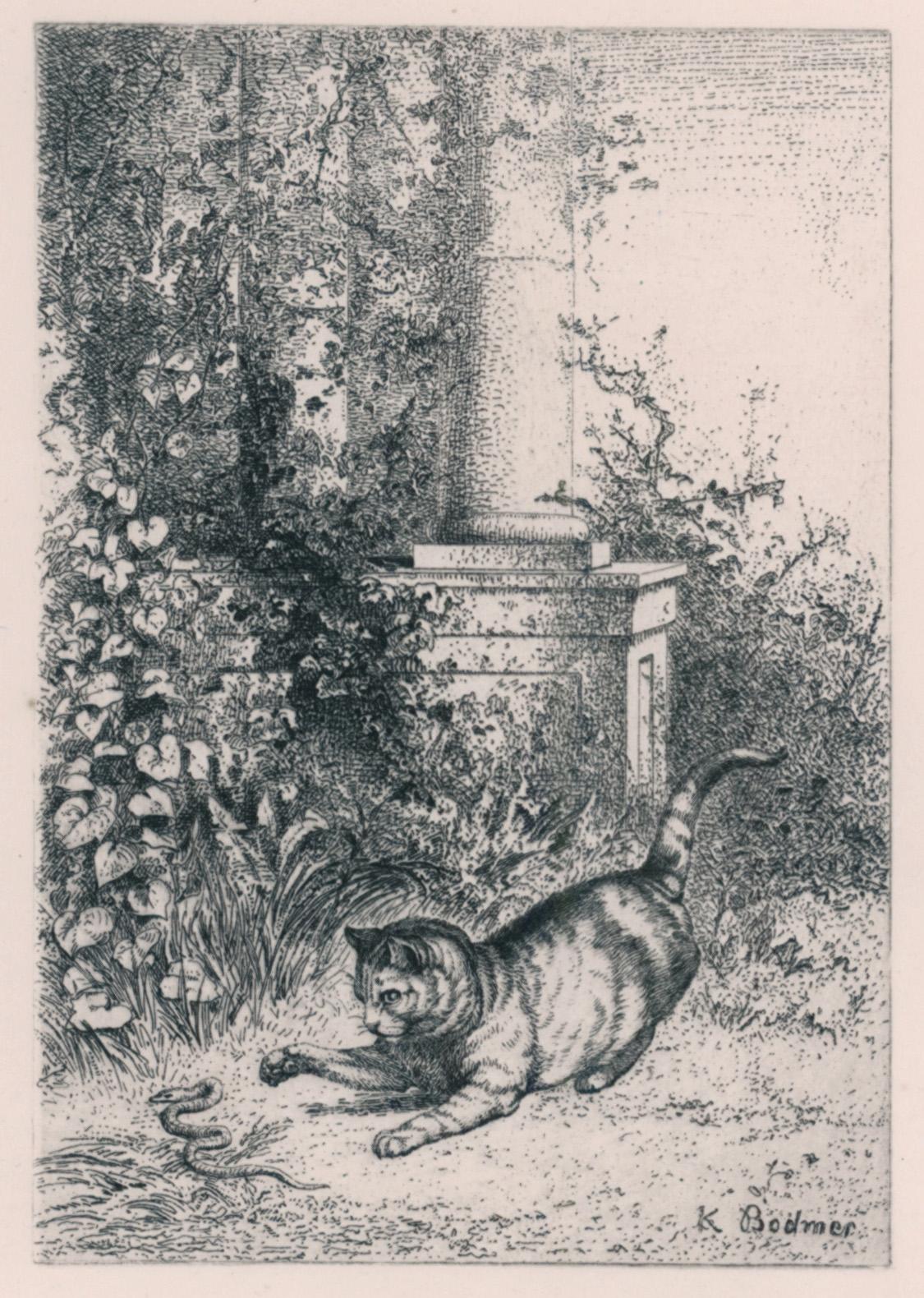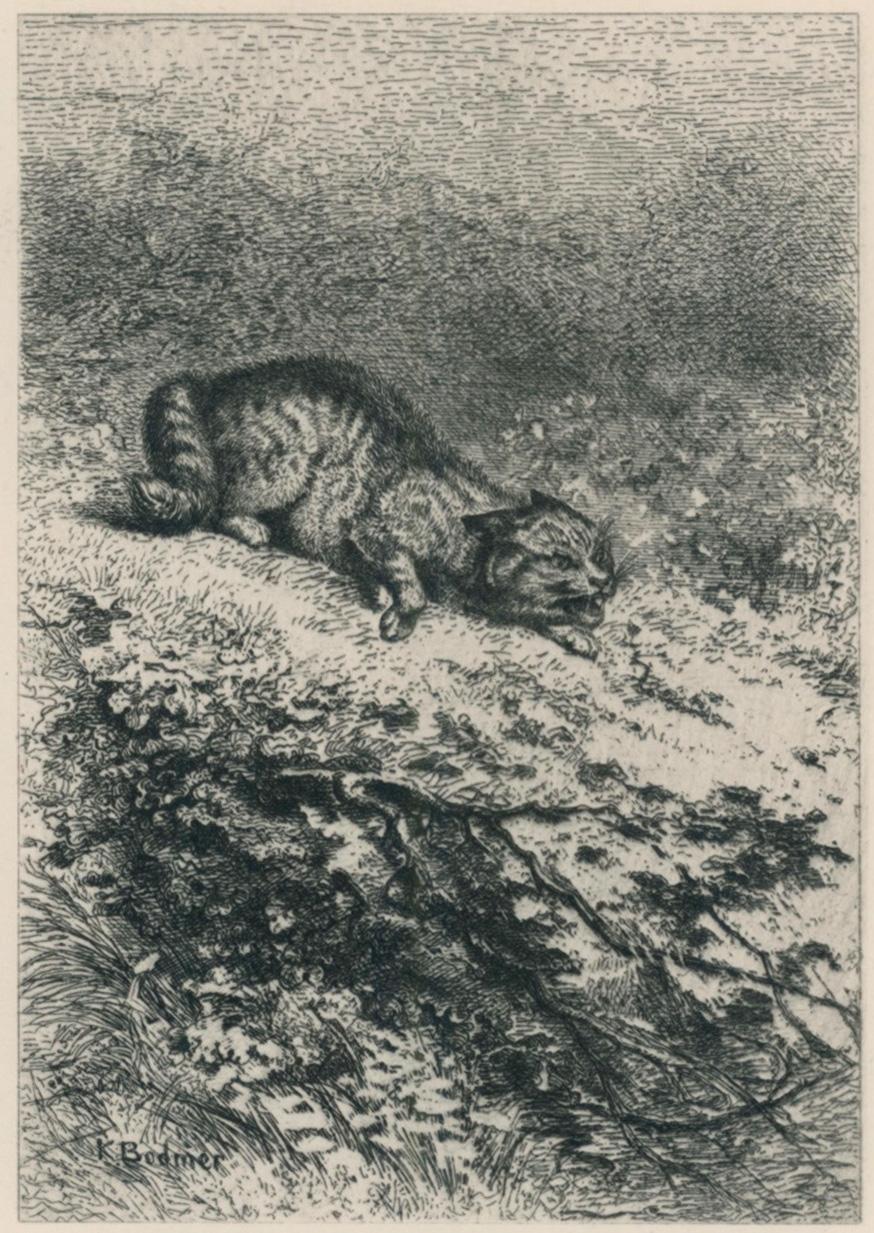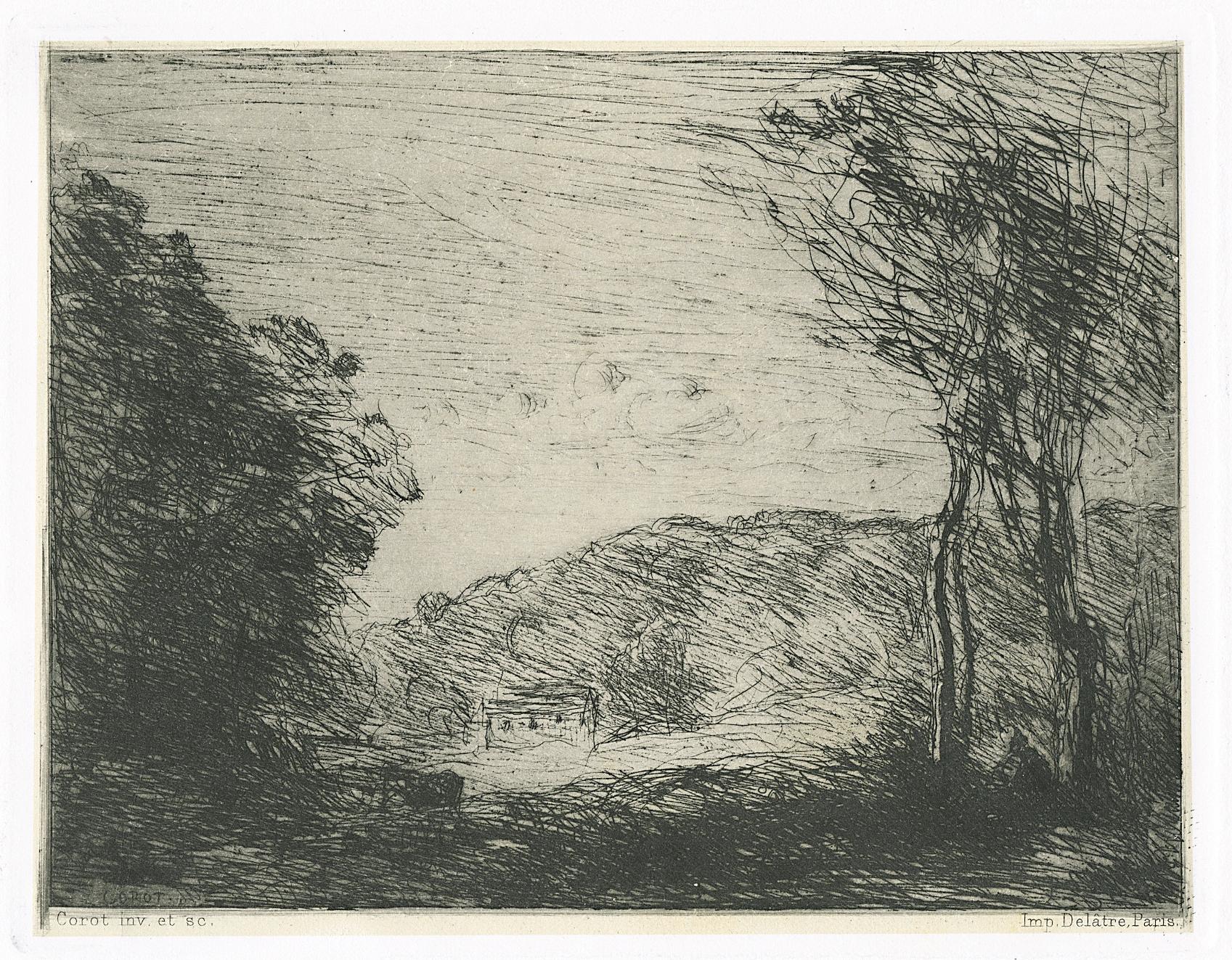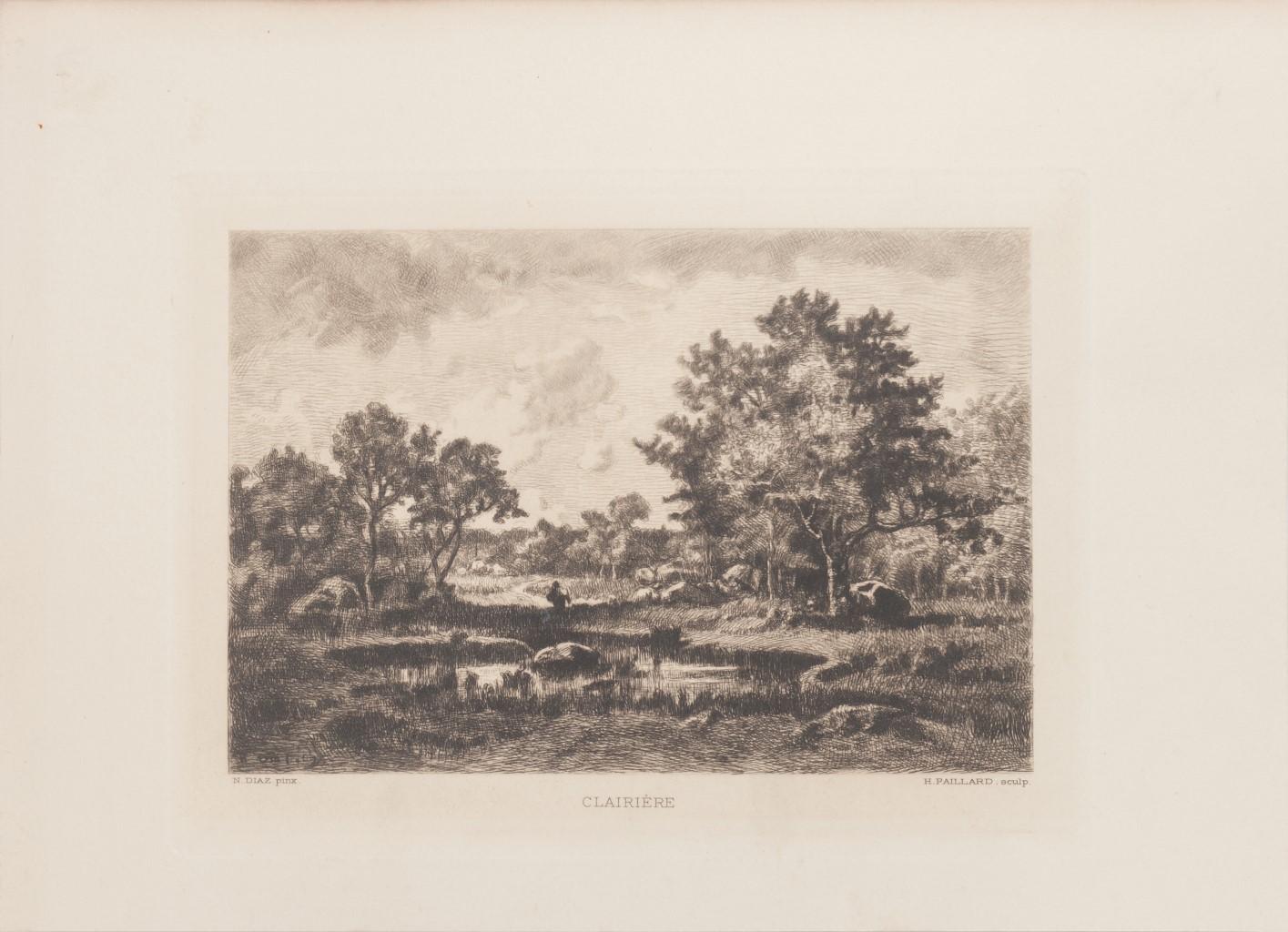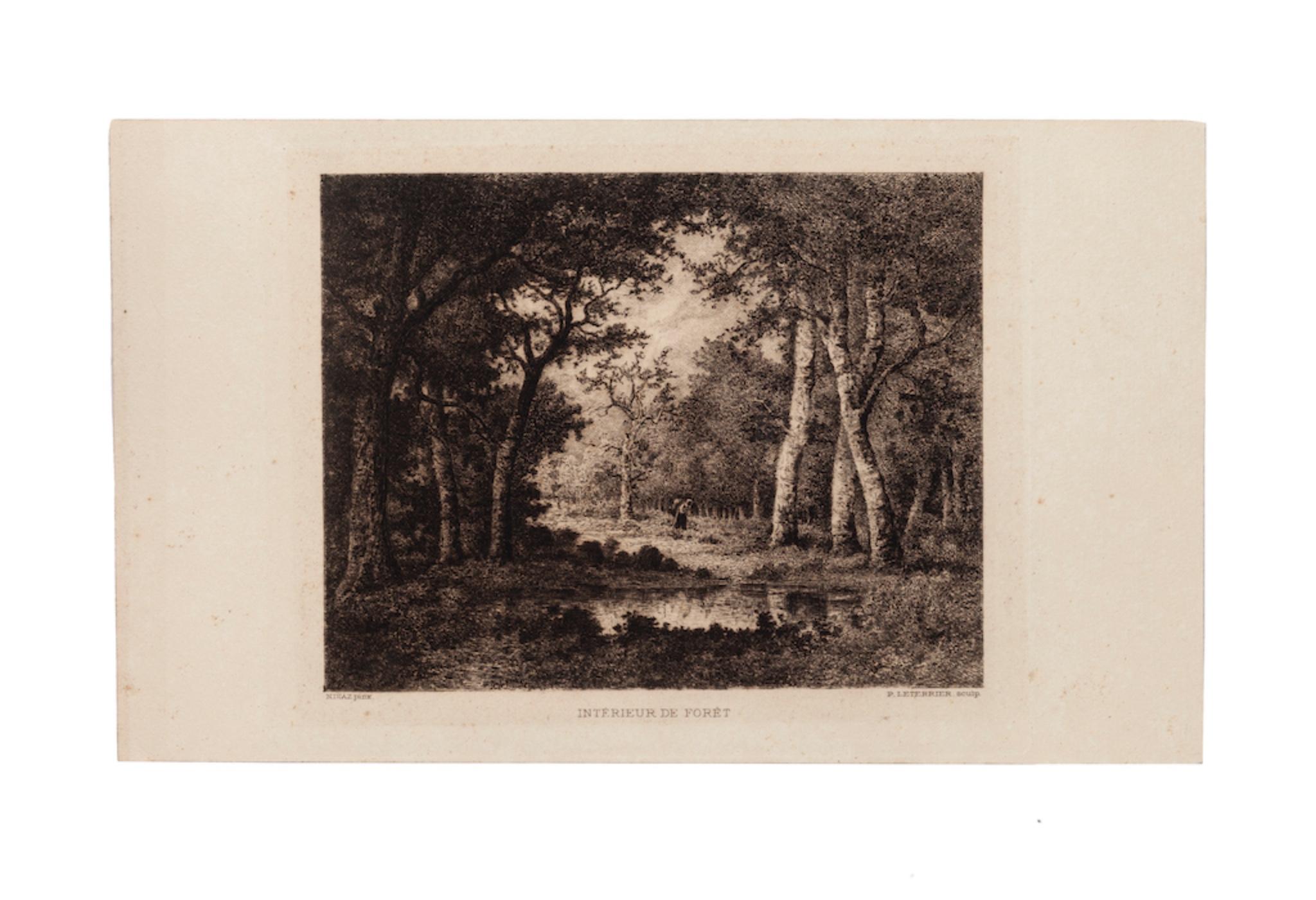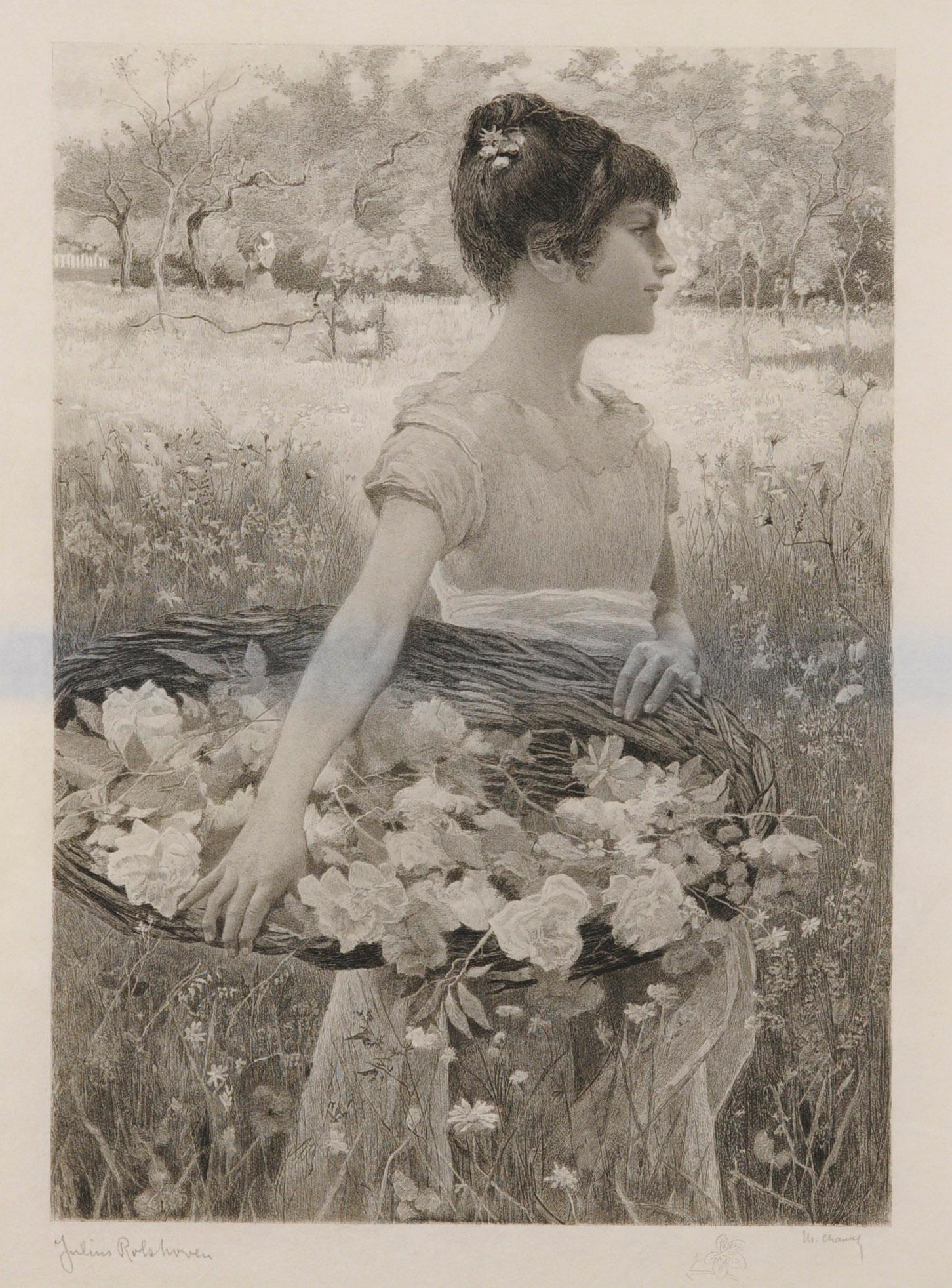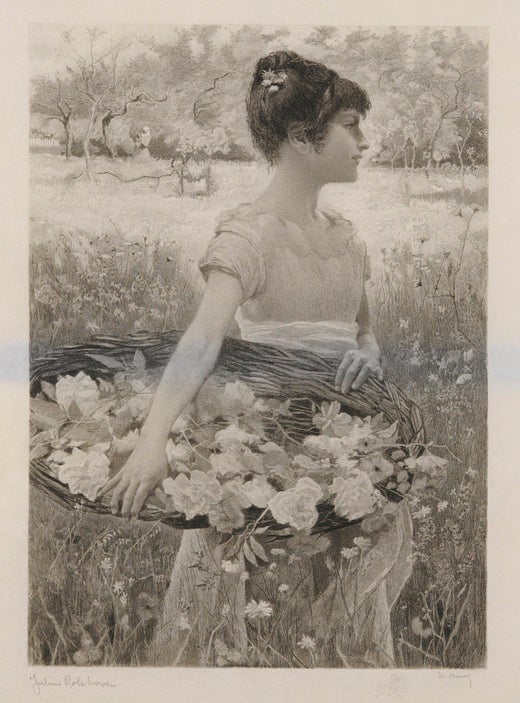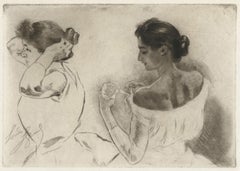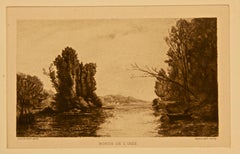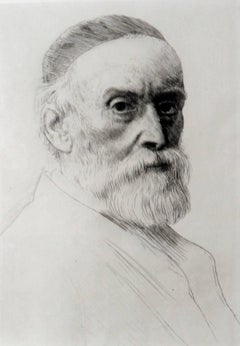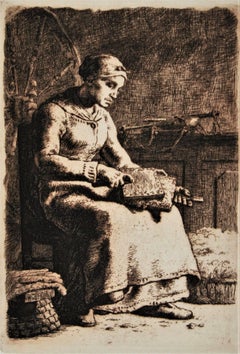
Connais-tu le Pays (Primavera) apres J. Rolshoven (Do you Know the Country)
View Similar Items
Theophile Narcisse ChauvelConnais-tu le Pays (Primavera) apres J. Rolshoven (Do you Know the Country)1889
1889
About the Item
- Creator:Theophile Narcisse Chauvel (1831 - 1909, French)
- Creation Year:1889
- Dimensions:Height: 17.375 in (44.14 cm)Width: 12.5 in (31.75 cm)
- Medium:
- Movement & Style:
- Period:
- Condition:
- Gallery Location:Fairlawn, OH
- Reference Number:Seller: FA118301stDibs: LU1407157632
Theophile Narcisse Chauvel
A pupil of François-Édouard Picot and Jean-Joseph Bellel, Théophile Chauvel entered the Imperial School of Fine Arts on March 4, 1854. In the same year, he won second prize in Rome for historical landscape. He first entered the Paris Salon in 1855, where he painted and exhibited until 1859. At that time, he devoted himself to dry point, a type of lithography and etching, from 1861 to 1867 where he represented, among other things, views of the forest of Fontainebleau, then reproductions of works by the masters of the Barbizon school.
From 1874–75, Chauvel worked for the annual album L'Eau forte and the magazine L'Art, of which he became director in the 1890s and in which were reproduced his prints after Théodore Rousseau, Jules Dupré, Narcissus Díaz de la Peña, and Charles-François Daubigny. But it is in his engravings of interpretation of Corot that he asserts all his mastery. Chauvel was a medalist at the Salon in 1870, 1873 and 1878. He won the medal of honor at the Salon des Artistes Français, the first awarded to the engraving section, in 1881. He was awarded the grand prix of the Salon in 1889 and 1900. He was appointed Knight of the Legion of Honor in 1879, then promoted to Officer of the same order in 1896.
- Connais-tu le Pays (Primavera) apres J. Rolshoven (Do you Know the Country)By Theophile Narcisse ChauvelLocated in Fairlawn, OHConnais-tu le Pays (Primavera) apres J. Rolshoven (Do you Know the Country -Spring) Etching, 1889 Signed "Julius Rolshoven...Category
1880s Barbizon School Figurative Prints
MaterialsEtching
- L'Aieule (The Grandmother)By Louis LegrandLocated in Fairlawn, OHL'Aieule (The Grandmother) Etching and aquatint printed in colors, 1904 Signed with the red stamp of the publisher, Gustave Pellet, Lugt 1193 and numbered (see photo) Edition: 100 (81/100) Reference: Arwas 202 iv/IV IFF 98 Condition: Excellent, the sheet aged as usual Image size: 14 1/4 x 18 5/8" Sheet size: 16 15/16 x 24 1/4" Louis Auguste Mathieu Legrand (29 September 1863 – 1951) was a French artist, known especially for his aquatint engravings, which were sometimes erotic. He was awarded the Légion d'honneur for his work in 1906. Life Legrand was born in the city of Dijon in the east of France. He worked as a bank clerk before deciding to study art part-time at Dijon's Ecole des Beaux-Arts. He won the Devosge prize at the school in 1883.[2] In 1884 Legrand studied engraving under the Belgian printmaker Félicien Rops. Legrand's artworks include etchings, graphic art and paintings. His paintings featured Parisian social life. Many were of prostitutes, dancers and bar scenes, which featured a sense of eroticism. According to the Hope Gallery, "Louis Legrand is simply one of France's finest early twentieth century masters of etching." His black and white etchings especially provide a sense of decadence; they have been compared to those of Henri de Toulouse-Lautrec, though his drawings of the Moulin Rouge, the can-can dance and the young women of Montmartre preceded Toulouse-Lautrec's paintings of similar scenes. He made over three hundred prints of the night life of Paris. They demonstrate "his remarkable powers of observation and are executed with great skill, delicacy, and an ironic sense of humor that pervades them all." Two of his satirical artworks caused him to be tried for obscenity. The first, "Prostitution" was a symbolic drawing which depicted a naked girl being grasped by a dark monster which had the face of an old woman and claws on its hands; the second, "Naturalism", showed the French novelist Émile Zola minutely studying the thighs of a woman with a magnifying glass. Defended by his friend the lawyer Eugène Rodrigues-Henriques (1853–1928), he was found not guilty in the lower court, but was convicted in the appeal court and then given a short prison sentence for refusing to pay his fine. Legrand was made famous by his colour illustrations for Gil Blas magazine's coverage of the can-can, with text by Rodrigues (who wrote under the pseudonym Erastene Ramiro). It was a tremendous success, with the exceptional quantity of 60,000 copies of the magazine being printed and instantly sold out in 1891. In 1892, at the instigation of the publishing house Dentu, Legrand made a set of etchings of his Gil Blas illustrations. The etchings were published in a book, Le Cours de Danse Fin de Siecle (The End of the Century Dance Classes). Legrand took a holiday in Brittany, which inspired him to engrave a set of fourteen lithographs of simple country life called Au Cap de la Chevre (On Goat Promontory). It was published by Gustave Pellet who became a close friend of Legrand's. Pellet eventually published a total of 300 etchings by Legrand, who was his first artist; he also published Toulouse-Lautrec and Félicien Rops among others. He did not only work in graphics; he exhibited paintings at the Paris salon of the Société Nationale des Beaux-Arts starting in 1902. In 1906 he was made a chevalier of the Légion d'honneur. Legrand died in obscurity in 1951. A retrospective exhibition was held at the Félicien Rops museum in Namur, Belgium in 2006 to celebrate his graphic art. The art collector Victor Arwas published a catalogue raisonné for the occasion. Books illustrated de Maupassant, Guy: Cinq Contes Parisiens, 1905. Poe, Edgar Alan: Quinze Histoires d'Edgar Poe...Category
Early 1900s Art Nouveau Figurative Prints
MaterialsAquatint
- Danseuses s'habillant (Laurence adjusting her hair and Mignon adjusting clothesBy Louis LegrandLocated in Fairlawn, OHDanseuses s'habillant (Laurence adjusting her hair and Mignon adjusting hre clothes) Drypoint & aquatint, 1893 Signed in the plate (see photo) After the division of the plate into A. 81 (as here) and A. 82 Divant la glace Editon 100 printed on velin paper Issued by Pellet in the set, Les Petites du Ballet, Gustave Pellet editeur, 1893 (13 plates), second state (b) without remarque Reference: Arwas 81, top portion of the plate vii/VIII Plate/Image size: 6 x 8 7/16 inches Condition: excellent Louis Auguste Mathieu Legrand (29 September 1863 – 1951) was a French artist, known especially for his aquatint engravings, which were sometimes erotic. He was awarded the Légion d'honneur for his work in 1906. Life Legrand was born in the city of Dijon in the east of France. He worked as a bank clerk before deciding to study art part-time at Dijon's Ecole des Beaux-Arts. He won the Devosge prize at the school in 1883.[2] In 1884 Legrand studied engraving under the Belgian printmaker Félicien Rops. Legrand's artworks include etchings, graphic art and paintings. His paintings featured Parisian social life. Many were of prostitutes, dancers and bar scenes, which featured a sense of eroticism. According to the Hope Gallery, "Louis Legrand is simply one of France's finest early twentieth century masters of etching." His black and white etchings especially provide a sense of decadence; they have been compared to those of Henri de Toulouse-Lautrec, though his drawings of the Moulin Rouge, the can-can dance and the young women of Montmartre preceded Toulouse-Lautrec's paintings of similar scenes. He made over three hundred prints of the night life of Paris. They demonstrate "his remarkable powers of observation and are executed with great skill, delicacy, and an ironic sense of humor that pervades them all." Two of his satirical artworks caused him to be tried for obscenity. The first, "Prostitution" was a symbolic drawing which depicted a naked girl being grasped by a dark monster which had the face of an old woman and claws on its hands; the second, "Naturalism", showed the French novelist Émile Zola minutely studying the thighs of a woman with a magnifying glass. Defended by his friend the lawyer Eugène Rodrigues-Henriques (1853–1928), he was found not guilty in the lower court, but was convicted in the appeal court and then given a short prison sentence for refusing to pay his fine. Legrand was made famous by his colour illustrations for Gil Blas magazine's coverage of the can-can, with text by Rodrigues (who wrote under the pseudonym Erastene Ramiro). It was a tremendous success, with the exceptional quantity of 60,000 copies of the magazine being printed and instantly sold out in 1891. In 1892, at the instigation of the publishing house Dentu, Legrand made a set of etchings of his Gil Blas illustrations. The etchings were published in a book, Le Cours de Danse Fin de Siecle (The End of the Century Dance Classes). Legrand took a holiday in Brittany, which inspired him to engrave a set of fourteen lithographs of simple country life called Au Cap de la Chevre...Category
1890s Art Nouveau Figurative Prints
MaterialsAquatint
- Boys SleddingBy John SloanLocated in Fairlawn, OHBoys Sledding Etching, 1920 Signed and titled in pencil by the artist below image (see photos) Annotated in pencil by the artist "100 proofs" Signed and dated in the plate lower left...Category
1920s Ashcan School Prints and Multiples
MaterialsEtching
- TrioBy Georges RouaultLocated in Fairlawn, OHTrio Color aquatint, 1938 Edition 250 printed on Montval wove paper with Maillol watermark From: Les Fleurs de Mal III (12 color aquatints) Published by A...Category
1930s French School Figurative Prints
MaterialsAquatint
- Pyramus and ThisbeBy Augustus Edwin JohnLocated in Fairlawn, OHPyramus and Thisbe Etching, c.1906 Signed along bottom edge in pencil "Augustus E John" Edition: 25 Reference: Dodgson 91 ii/II Condition: Excellent Plate: 5 1/8 x 4" (13.02 x 10.16 ...Category
Early 1900s Young British Artists (YBA) Figurative Prints
MaterialsEtching
- Bords de l'Oise, France - Original Etching by Maillard After Daubigny - 1860 ca.By Charles François DaubignyLocated in Roma, ITImage dimensions: 17.5 x 28 cm. Signed on plate. Includes passepartout. Very good conditions.Category
1960s Barbizon School Figurative Prints
MaterialsEtching
- Portrait of George Frederick WattsBy Alphonse LegrosLocated in Storrs, CTPortrait of George Frederick Watts (1817-1904. 1879. Etching. Beraldi catalog 19 state .iii/iv; Wright catalog 198, Bliss catalog 198. 7 1/8 x 5 1/4 (sheet 11 7/8 x 8). As published...Category
Late 19th Century Barbizon School Portrait Prints
MaterialsEtching
- La Cardeuse (Woman Carding Wool)By Jean François MilletLocated in Storrs, CTLa Cardeuse (Woman Carding Wool). c. 1858. Etching. Delteil, Melot 15. only state. 10 x 7 (sheet 12 3/8 x 9 1/2). Illustrated: Print Collector's Quarterly 25 (1938): 146; Keppel, The...Category
1850s Barbizon School Figurative Prints
MaterialsEtching
- L'Abreuvoir - Etching after Jules Dupré - 19th CenturyBy Jules DupréLocated in Roma, ITL'Abreuvoir is an Etching print on paper realized by After Jules Dupré in the 1870s. Titled and signed on the plate. The artwork is in good conditions.Category
19th Century Barbizon School Figurative Prints
MaterialsEtching
- Paturage. Clair de lune - Etching by Constant Troyon - 19th CenturyBy Constant TroyonLocated in Roma, ITPaturage. Clair de lune is a beautiful etching realized by Constant Troyon in 19th century. In Good condition. Worn paper and some stains on the back. on the lower margin the title ...Category
19th Century Barbizon School Figurative Prints
MaterialsEtching
- A Domestic Cat Playing with a Garter Snake, from Eaux-Fortes Animaux & PaysagesBy Karl BodmerLocated in Middletown, NYEtching on cream laid paper, 6 1/8 x 4 3/4 inches (156 x 120 mm), full margins. In good condition with some minor, uniform age tone. Printed by George Bertauts, Paris. [Beraldi II.140.26] Henri Béraldi Les graveurs du XIXe siècle: Guide de l'amateur d'estampes modernes. Librairie L. Conquet, vol. XII, Paris, 1885–1892, cat. no. 34, p. 140. __________ Well known in his native Germany as a watercolorist, Karl Bodmer had a rich experience exploring in North America in the 19th century, accompanying German explorer Prince Maximilian zu Wied-Neuwied as the official artist on an expedition which toured the Missouri River...Category
Mid-19th Century Barbizon School Animal Prints
MaterialsLaid Paper, Etching

